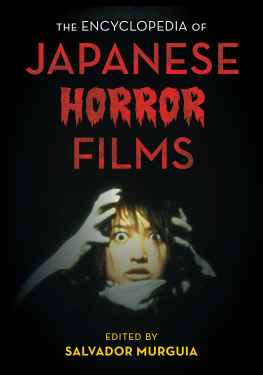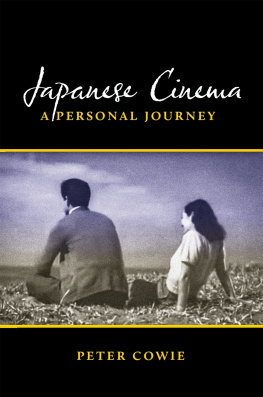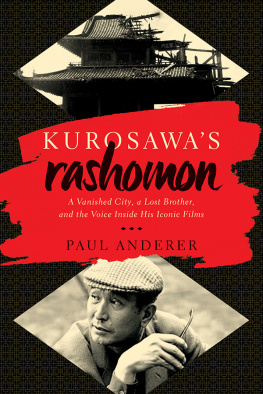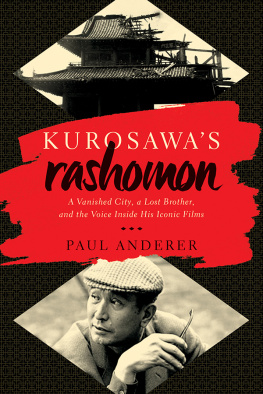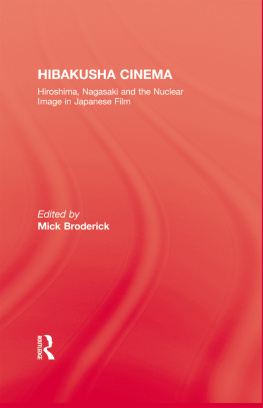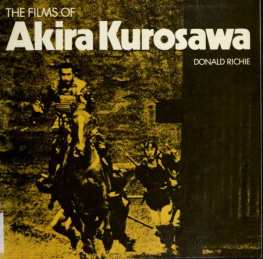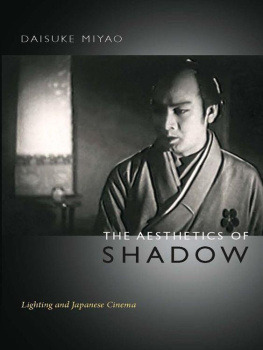ACKNOWLEDGMENTS
I could never have finished this book without the encouragement and help of my friends and colleagues. First and foremost, I would like to express my deepest thanks to Masao Miyoshi, who has unstintingly supported me since I was his student at the University of California, San Diego. He taught me that expertise in any academic subject does not have much value unless it is accompanied by intellectual integrity and political commitment, and that disciplinary boundaries exist not to be respected blindly but to be crossed and problematized. I am grateful to Fredric Jameson for his encouragement and interest in my work. His own work indelibly influenced the way I approach texts and construct theoretical models. I am also indebted to Karatani Kojin personally and intellectually. Origins of this book can be traced back to the research I conducted while staying in his study in Tokyo. I thank him for his hospitality and intellectual stimulation.
During the period of the direst predicament, Philip Lutgendorf and Peggy Timm helped me focus on my work. Without the timely advice and aid by Ruedi Kuenzli and Tom Lewis, I am not sure where I would be right now.
I would like to thank Ted Fowler, who offered detailed comments on the manuscript. Dudley Andrew and Ab Mark Nornes gave me valuable criticism on portions of the manuscript. Satomi Saitos assistance at the final stages of preparing the manuscript was indispensable. I wish to acknowledge Aaron Gerow, who made it possible for me to have access to many indispensable books on Japanese cinema. Tom Rohlich was always there to help me. I also benefited from two anonymous readers comments and suggestions. At Duke University Press, Reynolds Smith has been wonderfully supportive of the project since I first submitted the manuscript.
Finally, I would like to thank Kana Kitsukawa. Without her support, encouragement, and patience, the book would remain still unfinished. Taiyo and Akali probably still do not understand how much they helped me writing. I dedicate this book to my parents, Sumio Yoshimoto and Sachiko Yoshimoto, who waited for its publication for so long. Domo osoku narimashita.
INTRODUCTION
Kurosawa Akira secured his position as a representative Japanese film director in Japan and abroad when his Rashomon won a Grand Prix at the Venice Film Festival in 1951. Kurosawa is undoubtedly the most widely known and popular Japanese director perhaps even the most famous Japanese outside Japan. Without the international success of Kurosawa, it would have taken much longer for Japanese cinema to achieve the status of a recognizable national cinema for the non-Japanese audience and academics. Because of the success of Rashomon abroad, the Japanese themselves realized the significance of the international film market. The worldwide acceptance of Kurosawa gave them an opportunity to rearticulate consciously what constituted the national and cultural specificity of Japanese cinema. Both in and outside of Japan, the imagining of Japanese cinema as a national cinema has been intricately intertwined with a critical reception and consumption of Kurosawas films.
Despite his importance and popularity, however, if we examine the images of Kurosawa more closely, their clarity starts to dissipate. In fact, the position of Kurosawa in various critical discourses on Japanese cinema is even more problematic than that of such directors as Ozu, Mizoguchi, or Oshima. For instance, how Kurosawa is treated by Noel Burch, who reinvigorated an academic study of Japanese cinema in the late 1970s, is emblematic of a certain critical difficulty surrounding not only Kurosawa and his films but also Japanese cinema in general. Even though the prewar films of Mizoguchi and Ozu to a large extent have the greatest use value for Burchs avant-garde project, the pivotal figure for the projects overall coherence is neither Mizoguchi Yet in the end, Burch does not satisfactorily explain how these two contradictory images of Kurosawa can be reconciled.
Kurosawas position as a filmmaker in Japan has not been secure and unambiguous, either. The Japanese images of Kurosawa are at least as complex and contradictory as the Western images. By many Japanese, Kurosawa is regarded as the most Westernized Japanese director. As a testimony to this view, we can point out that Kurosawas name is often written in katakana, a type of Japanese syllabary usually used to write Japanese words of foreign origin. The non-Japaneseness of Kurosawas image is reinforced by the adjective world-famous, which is commonly used with his name written in katakana: sekai no Kurosawa. At the same time, the Japanese media have invented a nickname that is antithetical to his de-Japanized image. Kurosawa is often referred to as tenno, (Japanese) emperor, for his allegedly authoritative behavior. Surprisingly, these two conflicting images are simultaneously present even in a single piece of criticism whose author is oblivious to an inherent contradiction of his or her argument.
In both Japanese and Westerners construction of images of Kurosawa as a film director, there is a certain sense of anxiety, an apprehension about the validity of the critical concepts and frameworks they employ. I would argue that Kurosawa, who occupies a central position in the study, consumption, and construction of Japanese cinema, arouses the feeling of anxiety in Japanese and Western critics because his films problematize Japans self-image and the Wests image of Japan. To the extent that his films reveal the existence of a geocultural fantasy in a seemingly neutral critical language of film criticism, Kurosawa can be understood as a symptom of Japanese cinema as it is perceived as a national cinema. A careful analysis of the films of Kurosawa and discourses surrounding his work will illuminate, among other things, the basic assumptions underlying the critical conceptualization of Japanese cinema as a national cinema. This book tries to reexamine widely circulating cliches about Kurosawa and his films not as nonsensical misconceptions but as discursive reactions to real sociocultural contradictions, institutional dilemmas, and disciplinary formation and constraints in the university.
Thus the choice of Kurosawa as the focus of this study is a strategic one. The book is not just intended for fans or aficionados of Kurosawas samurai films or his gripping contemporary dramas with serious moral messages. Nor is it written for scholars in film studies or Japanese studies who are interested simply in learning more about Kurosawas films. While it closely examines the specificity of Kurosawas cinema, this study also tries to shift the basic ground on which the scholarship on Japanese cinema has been built and to problematize this scholarships dominant interpretive frameworks. No matter how sophisticated it might be, a study of some particular critical or historical problem that can be easily appropriated as another fine addition to the field of Japanese cinema studies would not achieve my goals. The sheer accumulation of empirical evidence and new historical information would not by itself change the image of Japanese cinema exchanged and circulating on the academic market. This study of Kurosawas cinema is based on the belief that one of the most effective ways to contest the axioms of a particular field of study or discipline is to take up a subject that is not necessarily new but already accepted as a canonical material. Given the central position he occupies in the reception of Japanese cinema, Kurosawa is a logical choice for an intense critical scrutiny and rethinking of the disciplinary formation and configuration of Japanese cinema scholarship.


